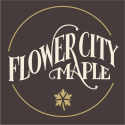
Headline news this morning, another reason to Love Maple!
Meet coconut water's new rival: Maple tree water
Wander into a Whole Foods (WFM) and you might find a new type of drink: maple tree water under the brand name Happy Tree. It claims to offer the nutrients and electrolytes of coconut water, which is currently a $400 million-a-year business, but at only half the calories.
The product name may not sound familiar, but you've probably heard of it. What comes in each $4.99 container is 16 ounces of sap from sugar maple trees. At that price it's just under $40 a gallon. Maple tree sap is the same commodity used to make real maple syrup, and it takes about 40 gallons of sap to make each $50 gallon of syrup.
Play VIDEO
Coconut water craze: Is the drink really what it's cracked up to be?
Through a twist in processing and packaging -- and a healthy amount of marketing -- Happy Tree and others in the nascent maple tree water industry have boosted the potential economic value that the underlying commodity can offer. At that rate, a gallon of maple syrup at retail would have to run about $1,597 to match the revenue of those 40 gallons of sap sold straight in individual packaging.
"I was working at McKinsey & Co., the consulting firm, and I visited my brother in the Catskill Mountains," company founder Ari Tolwin told CBS MoneyWatch. "He has buckets hanging under the maple trees. I looked in it and saw water. I tried it and thought it was delicious. I realized this is a product that in my opinion tastes better (than coconut water)."
It was also one of those quirks of innovation that sometimes only someone from outside a business can see. Tolwin likens the new product to coconut water, the competitor he's targeting. "It was a waste product that was thrown out" during the processing of coconut meat in the past.
What makes maple tree water ... uh, sap ... unusual is that commodity food products typically become more expensive after processing because of the manufacturing and waste costs. Artichoke hearts, for example, are more expensive per pound than buying fresh artichokes and boiling them.
But maple water is a contradiction. The additional value comes about when someone doesn't boil it for 24 hours to reduce a batch to a much smaller, concentrated amount of thick syrup.
"I don't want to oversell," Tolwin said. "This isn't a gold rush. It's an opportunity for the farmers to collect and sell more sap at a level that is profitable for them. Maple syrup for the most part is a commodity item. What we're trying to do is build a brand, which is a very different business than producing and selling maple syrup."
And revenue is far different from profit. This type of brand marketing is expensive. The company has to buy supply in the spring -- the only time the sap runs and is tapped -- and freeze it. As batches are needed during the year, they are thawed, processed and packaged.
However, it does suggest that many farmers in states with a significant number of sugar maples but relatively small syrup production might now have new ways to make money and support their businesses.
Just don't mix up the two products. Few things are worse in the culinary world than soggy pancakes.
Nancy and Mike
Our first time tapping, Spring 2009
24 taps, (1) 2'x3' pan, Sugar shack is an easy up.














 Reply With Quote
Reply With Quote



